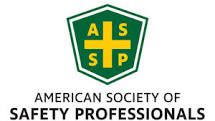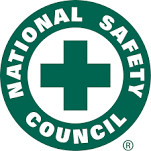Bridging the Gap: Why Contractor Verification Is the Missing Link in Your Safety Culture
The Hidden Risk Behind Every Jobsite
Every Safety Director or EHS leader has faced that moment of uncertainty standing on a jobsite, watching a contractor crew begin work, and asking: “Are they really as safe as they say they are?”
Behind every statistic, every incident, and every near-miss lies the same underlying issue: trust without verification. In today’s fast-paced industries, where contractor workforces make up a significant portion of total labor hours, that assumption can be catastrophic.
The truth is simple: A strong workplace safety culture cannot exist without rigorous contractor verification. It’s the missing link that transforms written policies into measurable protection for your people, projects, and reputation.
Understanding the Disconnect: Why Safety Culture Fails Without Contractor Verification
Even companies with mature safety programs often struggle with a fundamental inconsistency they hold employees to one standard and contractors to another. When verification ends at the gate, you invite unnecessary risk inside.
Here’s why the gap persists:
1. Manual tracking that breaks under pressure
Most organizations still rely on spreadsheets, emails, or scattered file systems to manage contractor documentation. Certificates of insurance (COIs), OSHA logs, and training records are reviewed once then forgotten until renewal.
This manual approach leads to missed expirations, inconsistent contractor prequalification, and hours of wasted administrative effort that Safety and Procurement teams simply don’t have.
2. Inconsistent contractor prequalification
Without a standardized contractor management system, every department or even every site develops its own criteria. One project may require safety manuals and EMR documentation; another may only ask for an insurance certificate.
The result? A fragmented approach that undermines compliance visibility and makes true risk management in contracting nearly impossible.
3. Reliance on self-reported data
Too many companies still take contractors at their word. But self-reporting without third-party verification leaves you exposed to OSHA citations, audit failures, and potential negligent-hiring claims.
If a contractor’s safety manual was never reviewed or worse, never existed - the liability is yours when an incident occurs.
The Ripple Effect: How Unverified Contractors Undermine Safety Compliance
The damage caused by weak verification practices runs deeper than a single jobsite:
- Increased OSHA exposure: Non-compliant contractors put your entire organization at risk of citations under the multi-employer worksite policy.
- Project delays and invoice holds: Missing or expired COIs often lead to delayed mobilization and unpaid invoices.
- Cultural erosion: Nothing weakens a workplace safety culture faster than watching unsafe contractors work unchecked.
- Reputational risk: One serious incident involving a subcontractor can undo years of brand trust.
Building the Foundation: The Role of Contractor Verification in a Mature Safety Culture
At its core, contractor verification is about transforming your safety culture from reactive to proactive - moving beyond paperwork to performance.
A robust contractor management system should deliver:
1. Comprehensive Contractor Prequalification
Collect and verify all critical compliance data from OSHA 300 logs and EMR ratings to safety program documentation, insurance coverage, and employee training.
FIRST, VERIFY’s online platform centralizes this information so every stakeholder sees the same, verified data in real time.
2. Continuous Safety Verification Process
Safety compliance isn’t a one-time event. Through automated alerts, remote audits, and rotating review cycles, organizations can ensure ongoing alignment with health and safety standards and reduce the administrative burden on internal teams.
3. Scalable Remote and Field Audits
A strong safety verification process doesn’t stop at document collection.
FIRST, VERIFY’s Remote Audit Program validates whether contractors implement the safety programs they submit — not just that they own a manual. When documentation raises concerns, targeted onsite audits provide the final layer of assurance.
4. Integrated Risk and Access Control
From prequalification through onboarding, contractor verification should tie directly into site access.
With
FIRST, VERIFY’s Onsite/Offsite feature, only approved contractors can enter your facilities, closing the loop between digital compliance and physical control.
From Compliance to Culture: Embedding Contractor Verification into Daily Operations
True safety leadership doesn’t happen in annual audits or quarterly meetings - it’s built into every contractor interaction.
Here’s how leading EHS and Operations teams are bridging the gap:
Standardize your contractor onboarding
Use consistent prequalification templates across every site to align with OSHA and company-specific requirements. This ensures equal scrutiny for high-risk and low-risk contractors alike.
Audit beyond paperwork
Combine document-based remote audits with selective onsite evaluations. This hybrid approach provides both scalability and depth, improving overall workplace incident prevention.
Track performance trends
Use automated scoring and analytics to identify high-performing contractors and flag emerging risks early.
Reinforce accountability
Require corrective action plans when deficiencies are found, and document every step for your next safety compliance audit. This not only reduces liability but also demonstrates continuous improvement during regulatory inspections.
The Business Case: Why Contractor Verification Drives ROI
Safety isn’t just compliance - it’s good business.
Organizations that implement a structured contractor verification and prequalification program report:
- Up to 40% fewer safety incidents through early risk detection and proactive remediation.
- Faster contractor onboarding with standardized templates and automated status tracking.
- Reduced administrative costs by eliminating redundant data entry and manual COI management.
- Improved operational continuity through consistent verification and fewer project delays.
By shifting from a manual, reactive process to an integrated contractor management system, EHS and Risk leaders not only strengthen EHS compliance but also enhance efficiency across Procurement and Operations.
Bridging the Final Gap
Every company wants a “strong safety culture.” But culture isn’t built by slogans - it’s built by systems that make safety non-negotiable.
Contractor verification is that system. It bridges the gap between intention and execution, between policy and practice. When every contractor onsite is verified, qualified, and accountable, safety becomes part of your company’s DNA - not just a compliance checkbox.
Ready to Close the Gap?
Join the high-hazard organizations that have transformed their contractor programs with FIRST, VERIFY.
See how a unified, verified contractor management system can strengthen your safety culture, streamline compliance, and protect your operations from prequalification to day-to-day performance.
👉
Request a demo at
www.firstverify.com






